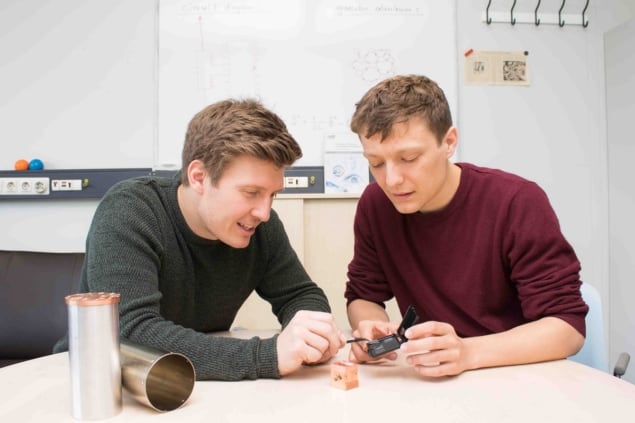
Use of superconducting circuits in quantum computing architectures is growing, yet the greatest resistance they face might come from not having enough of it. Although superconductors are prized for being materials with negligible DC resistance, having low impedances at higher frequencies can create problems for superconducting qubits (quantum bits), such as susceptibility to noise and cross talk. To overcome this limitation, researchers from Karlsruhe Institute of Technology have built a high impedance inductor, or “superinductor”, from granular aluminium. As first reported in Nature Materials, the superinductor can be directly incorporated into superconducting qubit circuits to produce robust quantum systems.
The path to most resistance
Superinductors, inductors with characteristic impedances larger than the resistance quantum (6.4 kΩ), were initially developed in part to improve the isolation of superconducting qubits from noise. Additionally, qubits using superinductors have shown enhanced anharmonicity, a characteristic related to the difference in energies required to transition between different states, which is essential for fast qubit operation and readout.
However, creating a superinductor is often laborious. Past approaches used arrays of hundreds of superconducting devices called Josephson junctions to build up a cumulatively large inductance. This technique requires complex fabrication of many densely patterned devices, while the multitude of junctions can produce undesired resonances and parasitic effects.
As a simpler alternative, the research team turned to granular aluminium (grAl), a superconducting material containing a mixture of pure, nanoscale aluminium grains and amorphous aluminum oxide. Although people have known about grAl since the 1960s, few studies have looked at its behaviour in the high-frequency regime where quantum circuits operate. By optimizing deposition parameters and studying material characteristics at gigahertz frequencies, the team found that grAl films can achieve superinductor behaviour.
“When we started this project, little was known about the high frequency properties of grAl films,” says Ioan Pop, lead researcher of the project, “The main challenge was to get an initial intuition of which set of [deposition] parameters [was] most likely to succeed, and then commit to a fabrication procedure…In this respect the project was a bit of a gamble.”
Towards quantum compatibility
To demonstrate the material’s compatibility with qubit circuits, the team incorporated grAl inductors into both the qubit itself and the resonator used to read out the qubit state. Since the qubit included a Josephson junction that was also based on aluminium, the entire circuit could be patterned together in just a single lithographic step—a significant advantage over approaches that demand difficult fabrication. Furthermore, the qubit’s coherence times were competitive with those of current technologies, suggesting that grAl does not hinder qubit performance.

What’s so super about superconductivity?
“Considering the microstructure of grAl, I think we were all a bit surprised that we did not observe a more dramatic coupling of the quantum circuits to the material defects in the [amorphous aluminum oxide] dielectric,” says Pop, “We know that the amorphous barriers are far from being perfect, and that they might contain electronic or atomic defects which could resonate with the circuit and spoil its quality factor. Fortunately, in our measurements this is almost never the case, and our circuits do not appear to be more susceptible to dielectric loss compared to standard aluminium quantum circuits.”
The successful use of grAl as a material for qubit circuits could solve many of the problems currently limiting the scaling-up of superconducting quantum processors. Beyond quantum information, grAl superinductors could also be used to make inductance-based photon detectors and high impedance resonators, opening the door for a new generation of superconducting devices.



